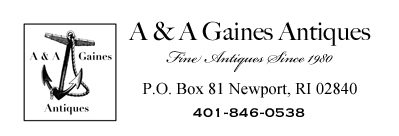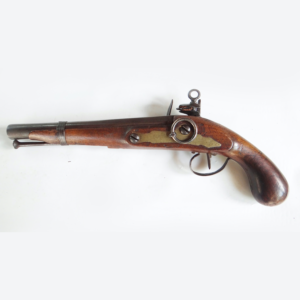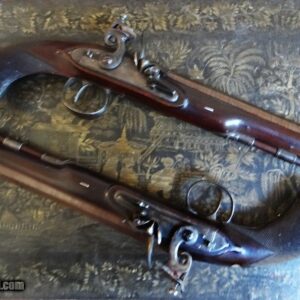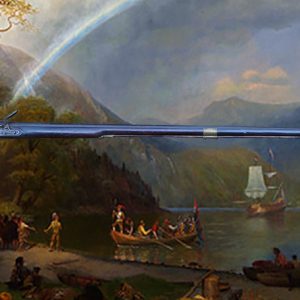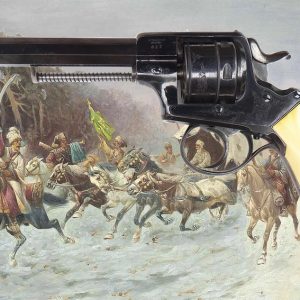
















Exceptional British ‘Admiralty’ type, 1743, Bronze 24 Pdr. Naval Cannon Model
One of the finest quality scale models we have ever encountered, this ‘Admiralty / Board of Ordnance’ quality representation of a British Royal Navy 24 pdr. of 1743, is an example of the best of its type. This fine model was built in 1987 by N.B. Heathecote and is signed on the barrel and the silver plaque on the front of the carriage.
During the 17th and 18th centuries the British Admiralty and Board of Ordnance commissioned exact scale models of proposed warships and naval ordnance. These superb representations in brass, iron, and wood were accurate to the smallest detail and their measurements would be scaled up to construct actual ships, guns, etc.
For most of the 18th century brass cannon barrels (technically naval bronze) were considered the top choice in artillery ashore and afloat. Their disadvantage was they were heavy and expensive to produce. Iron cannon barrels were being introduced, they were lighter in weight and cheaper than brass guns – which mattered more to the British army than the Royal Navy – but were inferior to brass guns in most ways. Therefore the Royal Navy was able to stick with brass guns. In 1722, Colonel John Armstrong took over as Surveyor General of Ordnance. Armstrong immediately set about redesigning British ordnance. His aim was to lighten the guns. Unfortunately, this made them even more prone to failure. Over the next two decades the strength of gunpowder had increased, exacerbating the problem, heavier models were tried. They were shown to be inadequate during the early years of war with Spain (1739-1749) prompting another re-design in 1742. Armstrong died in 1742, the new Surveyor General was Thomas Lascelles who oversaw redesigns in 1743 which proved adequate for service in the French & Indian War.
This cannon is an exact model of the ‘Armstrong Pattern’ 24 pdr. introduced in 1743. The brass 24pdr was the second most powerful cannon used aboard ship at the time. It was a powerful and versatile gun mounted aboard 4th rate ships-of-the-line ( 40 t0 64 gun ships) and as second tier armament on ships of 74 or more guns (higher rates).
This beautiful and substantial model follows that tradition in form, construction, and detail. The cannon has a 115 3/4″ heavy brass barrel with 2 1/2″ breech diameter. The barrel is signed by its maker in chiseled relief, “N. B. HEATHCOTE FECIT 1987”, the barrel also features the British Royal crest, and the arms of King George II in bas-relief exhibiting the highest quality chasing and engraving. A pair of cast dolphins are mounted above properly low set barrel trunnions precisely as they appeared on full size naval guns of the period. The barrel is mounted on a mahogany gun carriage featuring all the proper fittings executed in brass. The elevation platform and moveable quoin is present. The modeling quality is exceptional down to the small tenons used to lock gun carriage reinforcing bars. The front of the gun carriage bears a hallmarked sterling silver plaque engraved, “HEAVY 24 Pdr, British 1743, N.B. Heathcote, Hatton, Warwick, Model No. 007”. The obvious great expertise, effort, and artistic ability put into the construction of this model leads one to believe it, and six other cannon, could very likely have been commissioned and built for a special occasion and/or presentation.
It is very interesting to note that a number of 1743 pattern brass Armstrong pattern 24pdr guns were found at the wreck site of HMS ‘Victory’ sunk in the English Channel in 1744. Diver’s underwater photographs clearly show these guns in situ and the form and details of the model match the the guns carried aboard ‘VICTORY’.
This beautiful and impressive model is in excellent original condition.
Dimensions: barrel length 16″, breech diameter 2 1/2″ , bore .75 caliber 93/4″), overall length 16″, width 7″, height 6 7/8″, weight 12 1/4 lbs
Price: $1550.00 – Sold
